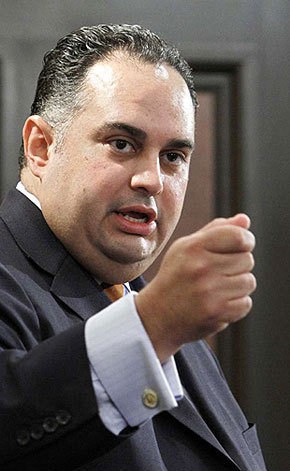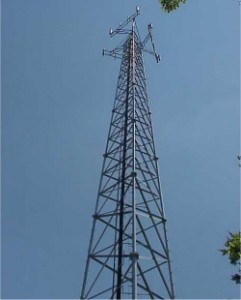
Veteran Assembly Speaker John Pérez, the Grand Marshal of a parade of incoming lawmakers attending AT&T’s festivities.
The ballots counted and the winners declared, newly elected members of the California State Assembly could have paused a few days to pen thank you notes or call supporters. Despite an uncommonly grueling campaign, there was simply no time for that when some of America’s largest corporations come calling with trips and gifts worthy of the grand prize on a game show.
More than a few consoled themselves (for now) with something closer to home — wiling away several hours inside AT&T’s luxury suite watching a Kings game with a corporate lobbyist.
Welcome to the world of lobbying on the state level — where “oversight,” “accountability,” and “unseemly” are mere words in a dictionary.
After a historic independent, bipartisan panel redrew California’s electoral districts without the usual political gerrymandering, a number of new faces are headed to Sacramento to do the people’s business. That represents trouble for AT&T and other major corporate interests, who promptly flooded the freshman class with offers of free trips, luxury suites, golf outings, and other “educational opportunities.”
“‘Hey guys, line up and receive your gifts,'” Bob Stern, former chief counsel to the state Fair Political Practices Commission half-joked to a reporter for the Los Angeles Times.
California’s electoral reform was supposed to discourage state lawmakers from finding themselves representing the interests of major corporate benefactors above those of the voters that elected them, but loopholes are everywhere.
The state Democratic party provides cover for legislators with their hands in the goody bag. Veteran Assembly Speaker John Pérez (D-Los Angeles) led the unseemly parade of a dozen newly-elected lawmakers to AT&T’s informal shindig at the Sleep Train Arena, where their host — the chief lobbyist for AT&T in California — was standing at the door waiting to shake hands. Ethical violation? Not a chance.
The rule that lawmakers must not take more than $420 in gifts per year was easily sidestepped by redefining the gathering as a state Democratic Party event, not one sponsored by AT&T.
That allowed freshman Jim Frazier, representing Oakley, to confuse his time at AT&T’s Luxury Lounge with an open town hall. Frazier told the newspaper the time with AT&T corporate officials was “a great opportunity to start meeting the people who worked so hard to represent their districts.”
 Jose Medina, the incoming assemblyman from Riverside readily agreed, noting that spending time with corporate lobbyists was “part of my job” and that it would have no impact on his decisionmaking, with the exception of pondering another plate of AT&T’s Clams Casino or holding out for the next round of Hot Cheese Puffs.
Jose Medina, the incoming assemblyman from Riverside readily agreed, noting that spending time with corporate lobbyists was “part of my job” and that it would have no impact on his decisionmaking, with the exception of pondering another plate of AT&T’s Clams Casino or holding out for the next round of Hot Cheese Puffs.
The face time is a golden opportunity for company lobbyists to “educate” freshman lawmakers about the issues, at least the way companies like AT&T see them.
If sports with AT&T isn’t exciting enough, lawmakers can select from a wide menu of vacationing alternatives, ranging from trips to Hawaii paid for by tobacco lobbyists and Big Pharma, or jet-setting to Brazil bankrolled in part by Chevron.
Philip Ung, an advocate with Common Cause, was unimpressed with the freshman defense for racking up corporate frequent flyer miles.
“They have obviously convinced themselves that the people’s business is best solved poolside with mai tais in hand,” he told the Times. “Congress [on the federal level] banned this type of travel years ago.”


 Subscribe
Subscribe





